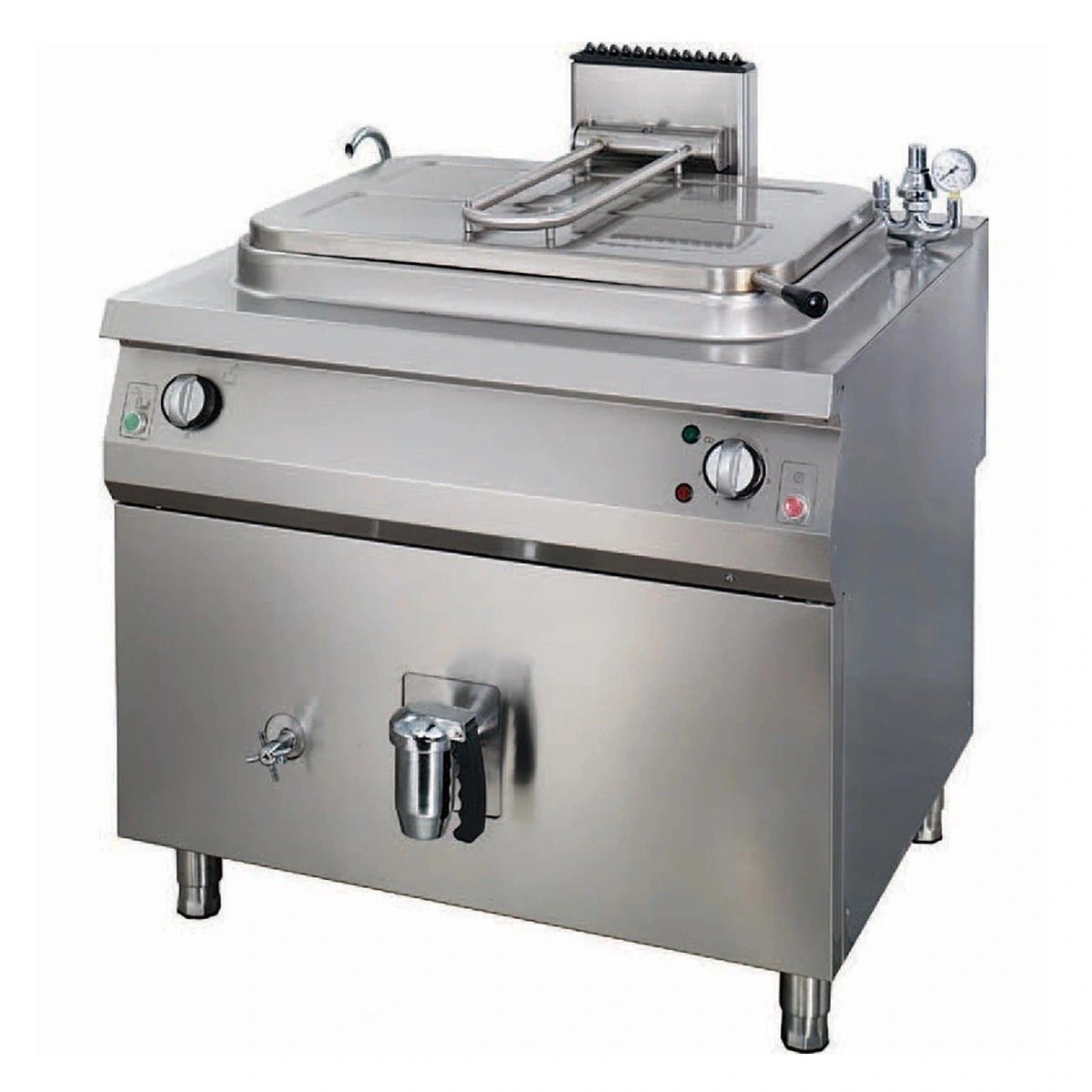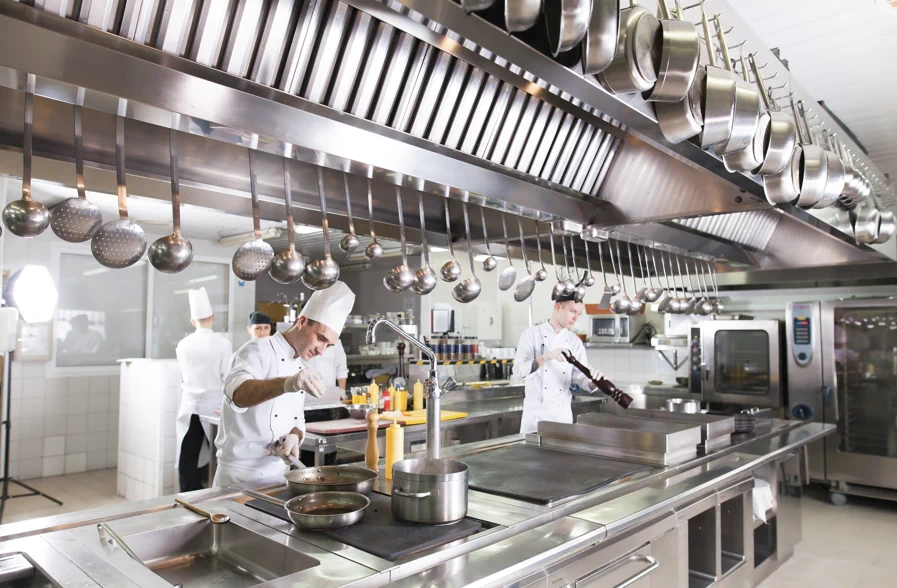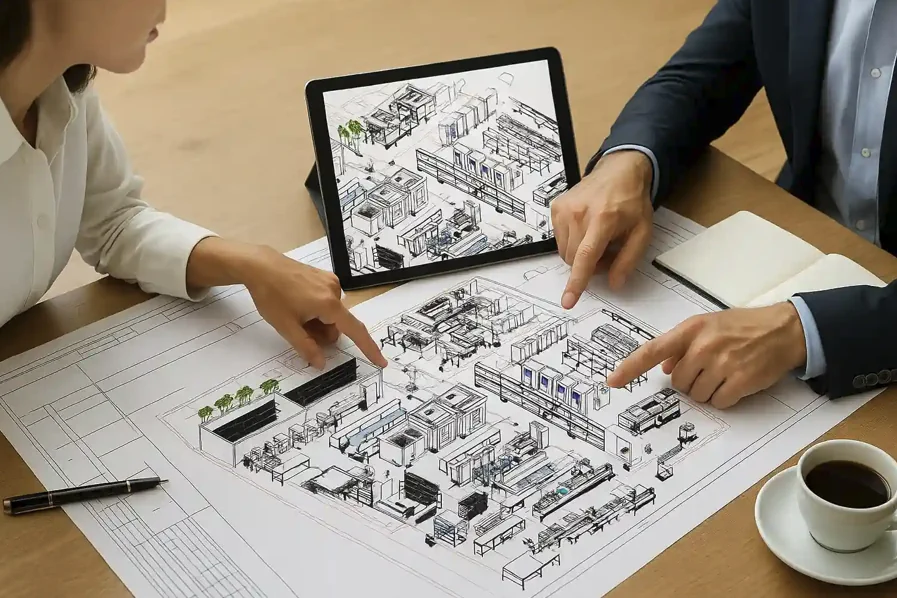
- Home
- Tilting Pans – Built in Turkey for Large-Batch Cooking in Commercial Kitchens
Cooking Equipments
Tilting Pans – Built in Turkey for Large-Batch Cooking in Commercial Kitchens
From Resort Kitchens to Remote Camps, Tilting Pans Deliver Every Time
From our fieldwork in Zanzibar resort kitchens to mass catering kitchens in Northern Algeria, we seen one common problem: inefficient batch cooking wastes time, energy, and staff morale. As part of our turnkey kitchen projects in over 90 countries, our team has solved this challenge by integrating tilting pans — engineered in Turkey, adapted for every kitchen scale.
Whether you’re a contractor, hotel procurement manager, or facility operations lead, choosing the right industrial kitchen equipment means choosing efficiency. And these pans? They tilt, yes — but they also transform your entire production logic.
In this guide, you’ll learn what makes Turkey-made tilting pans ideal for central production kitchens, catering kitchens, hospital kitchens, restaurant kitchens, resort kitchens, and even fine dining operations that cook high-volume sauces or stews.
1-Year Factory Warranty
Service in 90+ countries
Spare parts in Turkey, UAE
Technical Specifications
Model | Capacity | Heating Type | Tilt Mechanism | Dimensions (mm) | Power (kW) |
TP-80E | 80L | Electric | Manual | 900x850x850 | 9.5 |
TP-150E | 150L | Electric | Motorized | 1200x900x850 | 12.5 |
TP-200G | 200L | Gas | Motorized | 1400x950x850 | 18 |
Contact us for 900 series & 700 series compatibility.
Installation & Utility Requirements
- Power Connection: 380V 3-phase for electric models / ½” gas inlet for gas models
- Water Inlet: ¾” cold water direct connection (integrated faucet optional)
- Drainage: Floor drain or wall-mounted discharge line with splash prevention
- Ventilation: Install under hood canopy if open boiling occurs
- Space Clearance: Minimum 1200mm in front for full tilt operation
Hygiene & Maintenance Tips
- Always empty pan before cleaning
- Wipe with mild alkaline detergent — avoid harsh chemicals
- Check tilt hinges every 3 months
- Descale heating element quarterly (electric models)
Warranty & Global After-Sales Support
- 1-year standard warranty
- Local service partners in 30+ countries
- Training for on-site teams on safe usage & daily cleaning
🎯 Why Choose Our Tilting Pans – Key Advantages
- Ergonomic Operation: Less lifting. No awkward ladles. Just tilt & go.
- Batch Size Flexibility: From 80 to 200+ liters with even heat distribution.
- Energy Efficiency: Faster preheat times, lower energy waste.
- Safe Discharge: Controlled tilting prevents spills and steam burns.
- Hygienic Construction: 304 stainless steel interior and HACCP-compliant edges.
- Multi-Purpose Usage: Suitable for soups, sauces, pilaf, and even browning meat before transfer.
- Designed & manufactured in Turkey under CE norms
- Modular sizes for any kitchen footprint
- Custom faucet & drain options
- Exported globally — proven in every climate
“We save over 2 hours daily since installing the tilting pan. Game-changer.” — Catering Manager, Nairobi Intl. Hospital

Catering & Institutional Kitchens – Built for High-Volume Cooking
Catering and institutional kitchens demand reliability under extreme pressure. From mass catering operations serving 3,000+ meals daily to institutional kitchens in schools, universities, and hospitals, tilting pans ensure output consistency and safe operation.
- Event & field catering → quick setup, manual or gas tilting pans for off-grid use.
- Institutional kitchens → ergonomic motorized models reduce staff fatigue in canteens.
- Large-scale catering → 150L–200L pans keep pace with high-volume soups, rice, sauces.
- Bulk transfer → seamless integration with trolleys and GN containers speeds up service.
This makes tilting pans the backbone of large-scale commercial kitchen projects, delivering efficiency where mass production is critical.
📊 Comparison Table – Tilting vs. Boiling Pans
Feature | Boiling Pan | Tilting Pan |
Best For | Liquid cooking (soups, stocks) | Semi‑liquids & starches (soups, sauces, pilaf) |
Capacity | 100–300L | 80–200L |
Discharge | Manual drain valve | Manual or motorized tilt |
Ergonomics | Moderate, requires more handling | High, one‑person emptying |
Cost | Lower | Medium |

📐 How Kitchen Design Shapes Different Project Types
Tilting pans don’t just cook — they shape kitchen design. Proper placement ensures workflow efficiency and ergonomic safety.
- Hotel kitchens → place near bain maries and service counters.
- Restaurant kitchens → align with soup stations and prep sinks.
- Resort kitchens → integrate with buffet preparation islands.
- Catering kitchens → locate beside trolley lanes for high-volume transfer.
- Central production kitchens → cluster 2–3 units for maximum batch throughput.
- Hospital kitchens → ergonomic placement reduces staff strain and improves hygiene compliance.
Our engineers support consultants and designers with layout drawings, MEP integration, and flow diagrams — as part of turnkey kitchen projects.
🧭 Selection Guide – Choose What Fits Your Menu
- Batch Size – Small kitchens (50–80 meals per service) → 80L units. Large operations (300+ meals) → 150L–200L units.
- Cooking Type – Soups, sauces, starches → tilting pan. Frequent searing → bratt pan.
- Kitchen Type – Central production kitchens need motorized pans. Field kitchens benefit from gas-heated manual pans.
- Integration – Check trolley compatibility, faucet connections, and drain alignment before purchase.
📈 ROI & Operational Impact – Payback in Real Kitchens
In large-scale catering and hotel kitchens, time is money. Tilting pans reduce prep time by up to 2 hours per day, which translates into:
- Lower labor costs (1 operator instead of 2–3 for bulk cooking)
- Reduced energy waste through faster heating and efficient tilting discharge
- Faster service times → better guest satisfaction and smoother operations
👉 On average, our tilting pans pay back their cost within the first year of operation in high-volume kitchens.
Turnkey Project Integration – Beyond Just Equipment
Tilting pans are never just stand-alone units. In our projects, they are integrated into full turnkey kitchen solutions, aligned with:
- MEP drawings & utility plans
- BOQ specifications for consultants
- OS&E compatibility (trolleys, GN containers, serving stations)
- Workflow design to match catering or central production kitchens
This approach ensures that every tilting pan delivered is not just equipment, but a core part of the project ecosystem.
Integration with OS&E & Project Infrastructure
- Compatible with soup ladles, mobile transfer tanks, GN portioners
- Optional drain extension kits
- Integration with touchscreen MEP plan interface
This ensures smooth alignment of tilting pans with OS&E planning and foodservice operations.
⚠️ Layout Planning Tips – Avoiding Rookie Mistakes
- Always allow for full tilt clearance (1.2m front space)
- Never block side hinge access — service needs space
- Match drain level with floor grade to avoid pooling
❓ Frequently Asked Questions (FAQ)
Can one person operate it alone, even when full?
Yes — especially motorized models. The tilt is smooth, and control is intuitive.
What’s the real difference between a tilting pan and a bratt pan?
Tilting pans are for semi-liquids and batch boiling. Bratt pans excel at sautéing and shallow frying.
Which one is better — electric or gas model?
If your site has stable power, go electric for ease. Remote kitchens? Gas works best.
Can I use it for pilaf, pasta or starchy foods?
Absolutely — but monitor closely to avoid foaming. Some clients use anti-starch mesh or foam guards.
How hard is it to clean after a full day of use?
Surprisingly easy. Just tilt, rinse, and wipe. Optional faucet makes it even smoother.
💬 Real Projects & Client Testimonials – What Our Partners Say



Boiling Kettles
